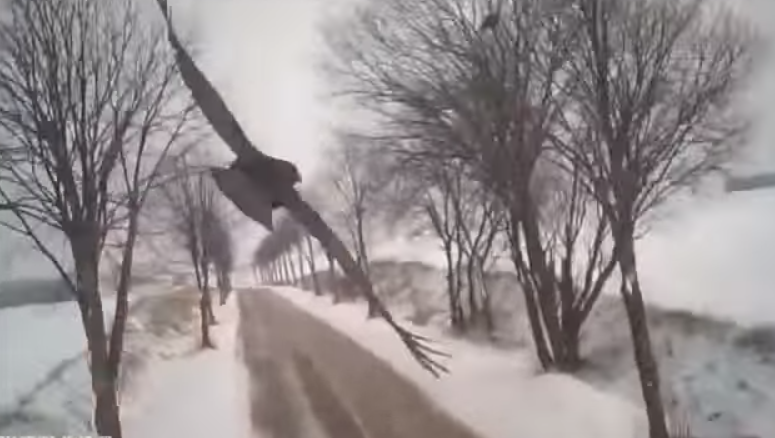Falcons, with cameras mounted on them, hunting crows.
Enjoy!
Falcons pursue prey using visual motion cues: new perspectives from animal-borne cameras
This study reports on experiments on falcons wearing miniature videocameras mounted on their backs or heads while pursuing flying prey. Videos of hunts by a gyrfalcon (Falco rusticolus), gyrfalcon (F. rusticolus)/Saker falcon (F. cherrug) hybrids and peregrine falcons (F. peregrinus) were analyzed to determine apparent prey positions on their visual fields during pursuits. These video data were then interpreted using computer simulations of pursuit steering laws observed in insects and mammals. A comparison of the empirical and modeling data indicates that falcons use cues due to the apparent motion of prey on the falcon’s visual field to track and capture flying prey via a form of motion camouflage. The falcons also were found to maintain their prey’s image at visual angles consistent with using their shallow fovea. These results should prove relevant for understanding the co-evolution of pursuit and evasion, as well as the development of computer models of predation and the integration of sensory and locomotion systems in biomimetic robots.


